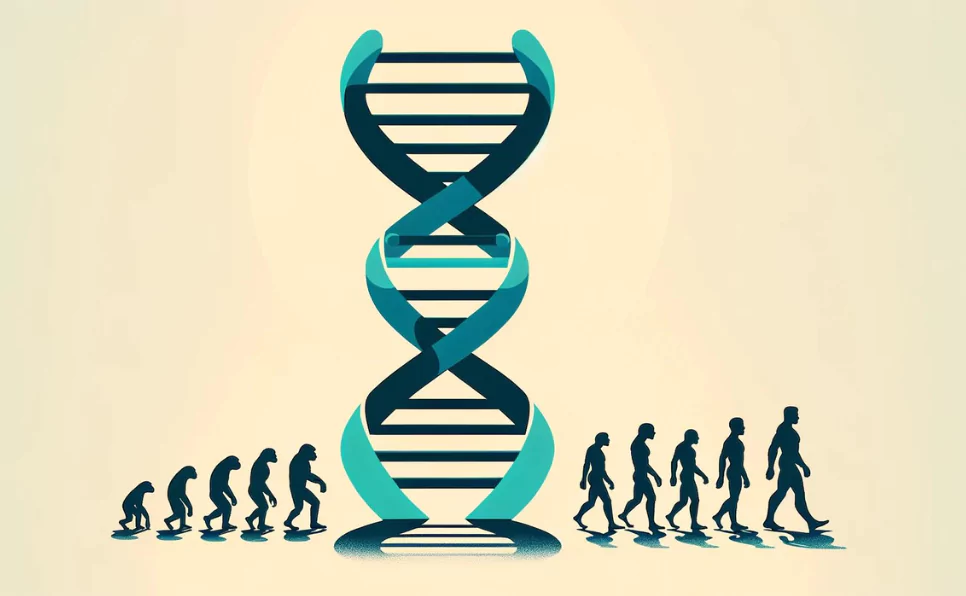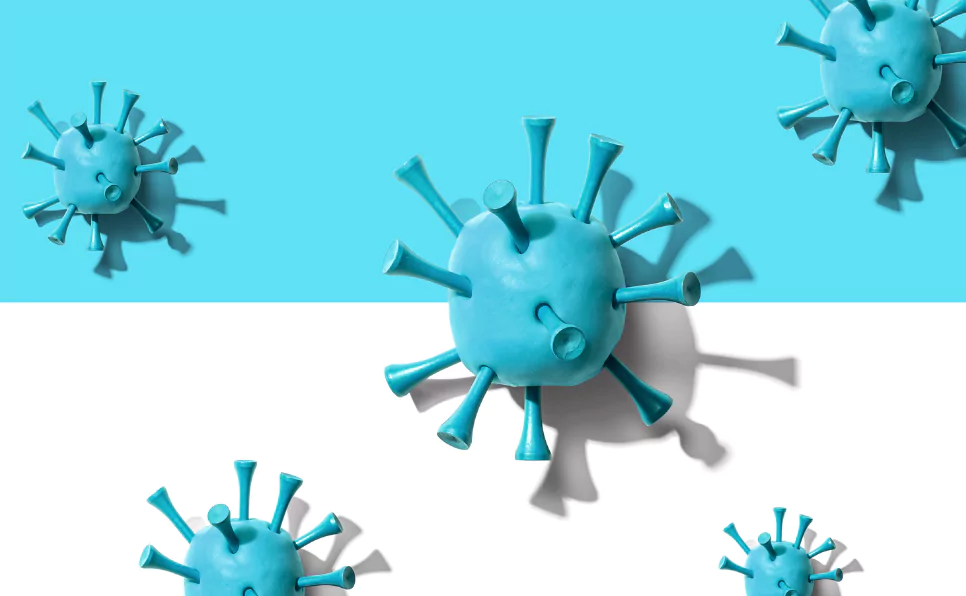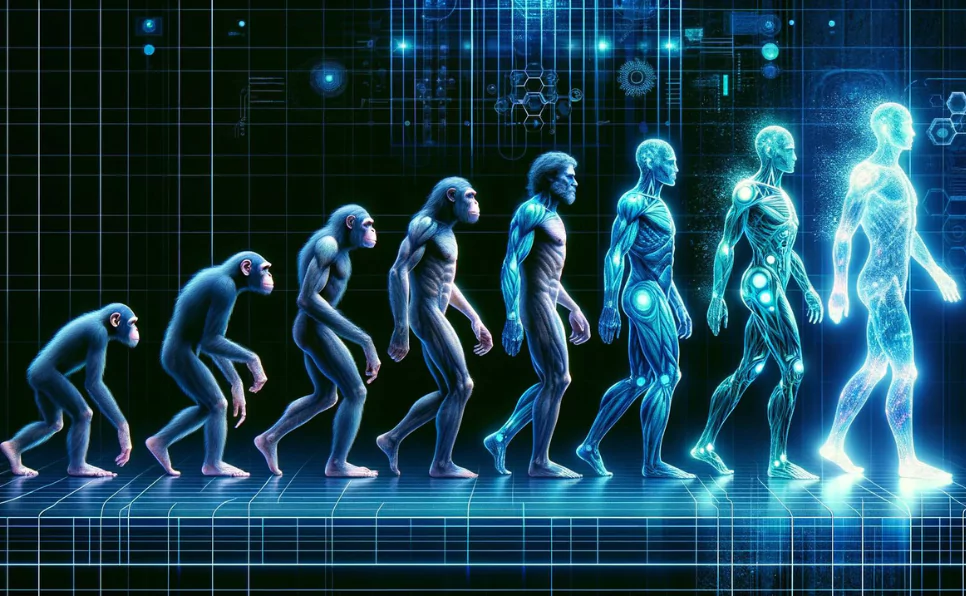When we talk about human evolution, it’s like unraveling a long, complex story that spans millions of years.
This story is not just about physical changes, like walking upright or developing larger brains, but also about the genetic shifts that made these changes possible.
Genetic mutations are central to this narrative. They are the unexpected twists and turns in our DNA that have shaped who we are today.
Genetic mutations are changes in the DNA sequence, the biological code that tells our cells how to function.
These mutations can be as small as a change in a single DNA building block (nucleotide) or as large as sections of chromosomes being rearranged.
They’re crucial because they introduce new genetic variations, some of which have played significant roles in human evolution.
Understanding these mutations and their impact on evolution gives us insights into why we are the way we are, how we’ve adapted to our environment over millennia, and what the future may hold for human evolution.
Key Takeaways
- Genetic mutations are the raw material for evolution, providing the genetic diversity necessary for natural selection.
- Certain mutations have played pivotal roles in human evolution, enabling the development of unique human traits.
- The future of human evolution could be influenced by both natural mutations and genetic engineering, raising important ethical considerations.
Understanding Genetic Mutations
Types of Genetic Mutations
Genetic mutations can be categorized into three main types:
- Point mutations: These occur when a single nucleotide in the DNA sequence is changed, which can affect a single gene in subtle or significant ways.
- Insertions and deletions: These are mutations where DNA sequences are added or removed from the genome. They can disrupt how genetic messages are read and lead to varied effects on our health and development.
- Chromosomal mutations: These involve larger segments of DNA, potentially affecting multiple genes. Such mutations can lead to significant changes or disorders, influencing evolution in profound ways.
Causes of Genetic Mutations
Several factors can cause genetic mutations:
- Environmental factors: Exposure to certain chemicals, radiation, and even lifestyle choices can increase mutation rates.
- Errors in DNA replication: Sometimes, when cells divide, mistakes happen, leading to mutations.
- Viral integrations: Viruses can insert their genetic material into our DNA, potentially causing mutations.
The Mechanisms of Evolution
Natural Selection and Genetic Drift
Two key processes drive evolution: natural selection and genetic drift. Both rely on genetic mutations but operate differently.
- Natural selection acts like a filter, favoring mutations that enhance survival and reproduction. Over time, these beneficial mutations become more common in the population. It’s not just survival of the fittest but survival of the most adaptable.
- Genetic drift is more random. It can cause mutations to become more or less common purely by chance. In small populations, its effects are more pronounced, leading to significant genetic variations without any advantage or disadvantage.
Gene Flow and Mutation Rate
Gene flow and mutation rate are also crucial in shaping genetic diversity:
- Gene flow happens when individuals from different populations interbreed, mixing genetic pools. This can introduce new mutations into a population, increasing genetic diversity and potentially aiding adaptation.
- The mutation rate is the frequency at which new mutations occur. While too many mutations can be harmful, a steady rate of mutation provides the raw material for evolution, allowing populations to adapt to changing environments.
“Genetic mutations are the engine of evolution, driving the diversity of life on Earth.”
Interplay between genetic mutations and evolutionary forces shows that life is not static but constantly changing, often in ways we’re just beginning to understand.
Genetic Mutations and Human Evolution
Human evolution is a fascinating journey that traces back millions of years, from our common ancestors with apes to the emergence of Homo sapiens.
This journey has been significantly influenced by genetic mutations, which have played a crucial role in shaping our species.
Understanding these mutations and their impact on our evolution can shed light on our past and offer insights into our future.
From Apes to Homo Sapiens
The journey from apes to Homo sapiens is marked by several key mutations that have distinguished us as a species.
These genetic changes have contributed to the development of traits that are uniquely human.
- Key mutations that distinguished Homo sapiens: One of the most significant mutations in human evolution is related to our brain size and cognitive abilities. Compared to our closest relatives, humans have larger brains that allow for higher cognitive functions, such as abstract thinking, language, and problem-solving. This increase in brain size is attributed to mutations in genes that control brain development, such as the ASPM and Microcephalin genes.
- The evolution of the brain and cognition: The expansion of the human brain over millions of years is not just about size but also complexity. Mutations in genes that regulate neural development have led to increased brain plasticity, enabling the learning and cultural adaptation that are hallmarks of human society. It’s fascinating to think about how small genetic changes can lead to such significant evolutionary advantages.
The Development of Unique Human Traits
Several unique human traits have emerged due to genetic mutations, allowing our ancestors to adapt to new environments and challenges.
- Lactose tolerance: a mutation story: The ability to digest lactose in adulthood is a relatively recent evolutionary development, associated with the domestication of dairy animals around 7,500 years ago. A mutation in the LCT gene enabled some humans to continue producing the enzyme lactase, necessary for the digestion of lactose, into adulthood. This adaptation provided a nutritional advantage in certain populations, illustrating how genetic mutations can lead to rapid evolutionary changes in response to dietary shifts.
- Skin pigmentation and environmental adaptation: Skin pigmentation in humans has evolved as an adaptation to various levels of UV radiation around the world. Mutations in several genes, including SLC24A5 and SLC45A2, have influenced skin color, allowing our ancestors to balance the need for vitamin D synthesis with the risk of UV damage. This is a prime example of how human populations have evolved genetically to adapt to different environmental conditions.
- Resistance to diseases and genetic mutations: Our evolutionary history is also marked by our battles with diseases. Mutations that provided resistance to infections have been positively selected throughout human history. For instance, a mutation in the CCR5 gene provides resistance to HIV infection, while mutations in the HBB gene offer protection against malaria. These adaptations highlight the role of genetic mutations in survival and reproduction.
The Future of Human Evolution
Looking ahead, the future of human evolution is likely to be influenced by both natural selection and human intervention.
- Predicting Future Genetic Changes: While predicting specific future mutations is challenging, we can expect that human evolution will continue as long as environmental pressures and challenges exist. Climate change, for example, may select for genetic adaptations to new diseases or dietary changes.
- Genetic engineering and human evolution: The advent of genetic engineering technologies, such as CRISPR-Cas9, has opened up the possibility of directed human evolution. These technologies allow scientists to edit genes with precision, potentially eliminating genetic diseases or enhancing certain human traits. However, this power also comes with significant ethical considerations.
Ethical Considerations and Genetic Research
The potential to manipulate human genetics raises important ethical questions about the future of our species.
- The ethics of manipulating human genetics: While the prospect of curing genetic diseases is undoubtedly appealing, the possibility of ‘designer babies’ and the implications for social inequality and diversity are concerning. It’s crucial to have open and inclusive debates about how these technologies should be used.
- The balance between evolution and genetic engineering: Finding a balance between allowing natural evolutionary processes to unfold and using genetic engineering to improve human health and well-being will be one of the significant challenges of the 21st century. These discussions must consider both scientific possibilities and ethical imperatives.
Final Thoughts
Genetic mutations have been the driving force behind human evolution, shaping our physical and cognitive traits and enabling our ancestors to adapt to a changing world.
As we look to the future, the continued impact of genetic mutations, combined with the possibilities offered by genetic engineering, promises to keep human evolution on an intriguing path.
The key will be navigating this future with care, ensuring that ethical considerations guide our exploration and application of genetic knowledge.
FAQs
What is the difference between a beneficial mutation and a harmful mutation?
A beneficial mutation enhances an organism’s ability to survive and reproduce in its environment. In contrast, a harmful mutation reduces an organism’s fitness, potentially leading to decreased survival or reproductive success. The impact of a mutation largely depends on the environment.
How do scientists determine which genetic mutations influenced human evolution?
Scientists determine the impact of genetic mutations on human evolution by comparing DNA sequences between humans and other species, analyzing ancient DNA samples, and studying the physical or health effects of specific mutations. This research helps trace the evolutionary history of unique human traits.
Can genetic mutations be reversed?
Most genetic mutations are permanent and cannot be naturally reversed. However, recent advances in genetic therapy and editing technologies, like CRISPR-Cas9, offer potential methods to correct or mitigate the effects of harmful mutations, opening new avenues in medical treatment.
How do genetic mutations contribute to genetic diversity?
Genetic mutations are a primary source of genetic diversity, introducing new DNA sequences into a population. This diversity results in a range of physical, physiological, and behavioral traits among individuals, which can influence their survival and reproduction in changing environments.
What role do genetic mutations play in modern human health?
Genetic mutations play a dual role in modern human health, leading to both beneficial adaptations (like disease resistance) and harmful conditions (such as genetic disorders). Understanding these mutations is crucial for medical research, disease prevention, and the development of new treatments.
Is it possible to predict future mutations in humans?
Predicting specific future mutations in humans is highly challenging due to the random nature of mutation processes. However, scientists can make educated guesses about potential evolutionary trends based on environmental pressures, existing genetic variation, and the historical pace of genetic changes.
For Further Reading:
- Mutations Are the Raw Materials of Evolution – Nature
- Human-specific genetics: new tools to explore the molecular and cellular basis of human evolution – Nature Reviews Genetics
- Massive genetic study shows how humans are evolving – Nature
- Decoding Brain Evolution – Harvard Medical School
- The mutations that make us human – Understanding Evolution

Dr. Heena Arora, a passionate geneticist and microbiologist, is a valuable asset to the Genes Wellness team. Her seminal work includes identifying a key gene for white rust resistance in mustard. Leveraging her deep expertise in genetics and microbiology, she ensures the accuracy and integrity of our content. Dr. Heena’s commitment to knowledge dissemination makes her an integral part of our team.





